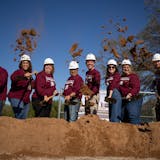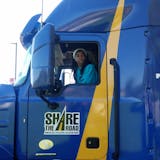The chief technology officer at Land O’Lakes has a secret to making the cooperative, its owners and its customers more digitally adept: the human touch.
A majority of Teddy Bekele’s calendar is purple — the color assigned to one-on-one meetings — as he spends his days vacuuming up knowledge and dispensing it in turn.
“It’s not just my direct reports, but all the way down to the entry level,” Bekele said. “I say, ‘Tell me about the problem that you know you’re facing every day and how we can solve it.’ In the process, I’m learning everything that’s happening. Which is a lot of fun.”
Land O’Lakes appointed Bekele the company’s first tech executive in 2018 amid a growing need to connect agriculture with big data and insights. Six years on, it’s still in Bekele’s job description to “lead digital transformation” at the 103-year-old cooperative, especially as artificial intelligence unites a common theme tech and ag share: optimization.
“For the amount of inputs you’re putting in, you’re getting the maximum outputs,” he said. “That’s the core of where our insights and AI come into play.”
Bekele’s team of about 250, plus another 750 consultants and contractors, are dispersed throughout the cooperative’s business units: dairy foods, WinField United crop inputs, Purina animal feed and Truterra, in addition to areas like supply chain. Some of those employees even report to other leaders, giving tech a seat at many tables.
“We’re going to help them get smart about data and analytics,” Bekele said. “As a technology organization inside Land O’Lakes, we’re only successful if Land O’Lakes businesses are successful, and the business is only successful if the retailers and farmers are successful.”
Excitement builds in Bekele’s voice as he talks about the power of generative AI to find highly specific answers about pesticides while out in the field, or how it can help sales teams map out restaurants most likely to buy Land O’Lakes butter.


